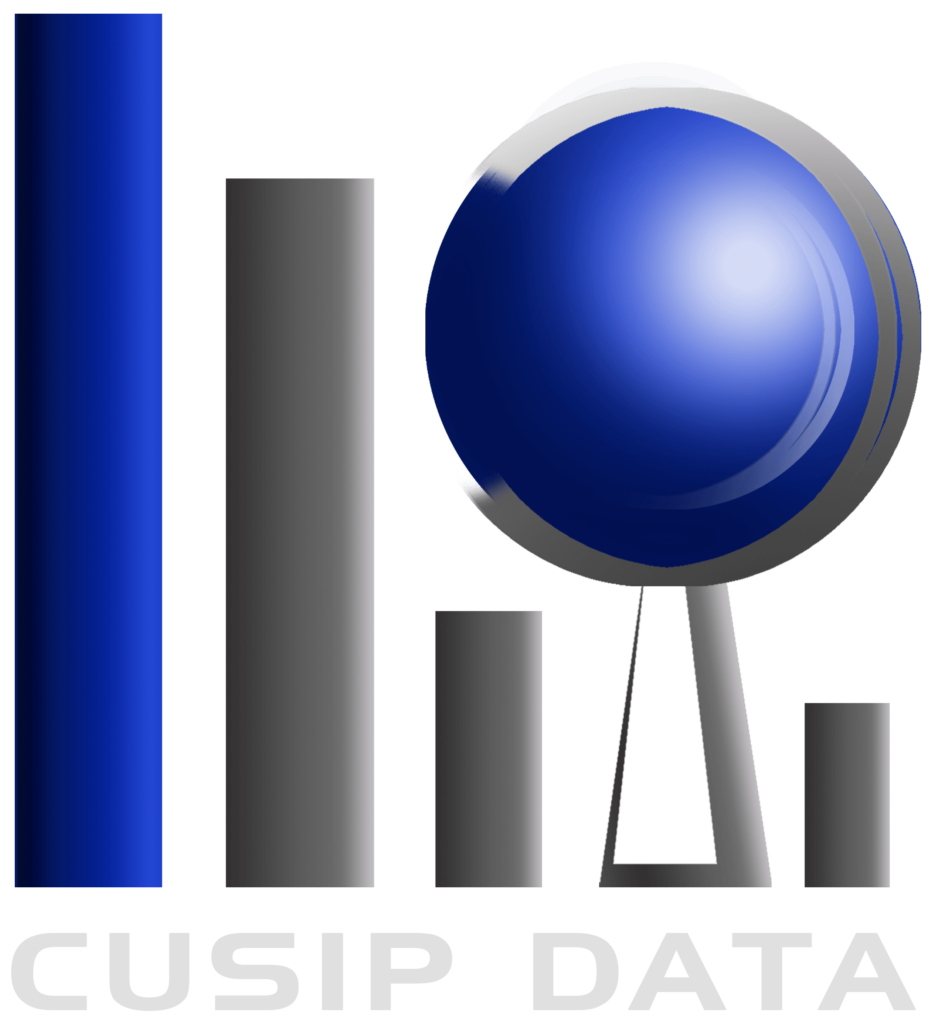- HOME
- About us
- Services
- COVID-19 and CUSIP Codes: Impacts on Mortgage Loan Securities Markets
- The Significance of CUSIP Numbers in Mortgage-Backed Securities Trading
- CUSIP Codes and Consumer Protection in Mortgage Lending
- CUSIP Codes and ESG Factors in Mortgage Loan Investments
- CUSIP Codes and Loan Pools: Maximizing Value in Mortgage Loan Sales
- CUSIP Codes and Mortgage Loan Origination: What Homebuyers Should Ask
- CUSIP Codes and Risk Management in Mortgage Loan Portfolios
- CUSIP vs. Ticker Symbols: Key Differences in Mortgage Loan Securities
- Emerging Trends in CUSIP Use within Mortgage Loan Securities
- How CUSIP Codes Affect Mortgage Loan Transparency for Homebuyers
- How CUSIP Codes Help Investors Navigate Mortgage-Backed Securities
- How CUSIP Numbers Can Help Consumers Understand Mortgage Loan Risks
- How CUSIP Numbers Facilitate Mortgage Loan Due Diligence for Sellers
- Legal and Regulatory Aspects of CUSIP Codes in Mortgage Loan Sales
- Liquidity Enhancement: CUSIP Codes in the Mortgage Loan Sales Process
- Streamlining Mortgage Loan Sales with CUSIP Number Integration
- The Evolution of CUSIP Codes in Mortgage-Backed Securities Markets
- The Future of CUSIP Codes: Innovations in Mortgage Loan Markets
- The Impact of CUSIP Standardization on Mortgage Loan Securities
- The Importance of CUSIP Codes in Selling Mortgage Loans
- The Role of CUSIP Codes in Mortgage Loan Documentation for Borrowers
- The Role of CUSIP Codes in Mortgage Loan Securitization
- The Role of CUSIP Codes in Mortgage-Backed Securities
- Transparency and CUSIP Codes in the Secondary Mortgage Loan Market
- Understanding CUSIP Codes: A Primer for Mortgage Loan Securities
- Using CUSIP Codes to Track and Manage Mortgage Loan Information
- Using CUSIP Data to Evaluate Mortgage Loan Pricing Strategies
- What Consumers Should Know About CUSIP Numbers in Mortgage Loans
- CUSIP & Securitization of Mortgage Loans – A Journey into Financial Clarity
- The Essential Interplay between CUSIP & Securitization of Mortgage Loans
- CUSIP & Securitization of Mortgage Loans – Structuring a Transparent Market Landscape
- The Synchrony of CUSIP & Auto Loan Securitization speeds up Finance
- The alignment of “CUSIP & Securitization of Auto Loans” evolves the realm of finance
- The Synergistic Integration of CUSIP & Auto Loan Securitization
- Analyzing CUSIP and Securitization of Credit Card Loans
- CUSIP Numbers and Asset Allocation Strategies
- The Global Reach of CUSIP Numbers
- How Corporate Actions lead to changes of CUSIP Number
- Protect CUSIP Numbers for Security and Fraud Prevention
- CUSIP Data: Key Insights for Mortgage Loan Investors
- The Role of CUSIP Numbers in Regulatory Compliance
- The Importance of CUSIP Code in Risk Management
- CUSIP and Mortgage Loans: Standardization in a Complex Financial Landscape
- CUSIP Data: Important approach to Mortgage Loan Investors
- Mortgage Loan Investor’s Guide: Essential Insights into CUSIP Data
- CUSIP and Securitization of Credit Card Loans: Navigating the Financial Matrix
- CUSIP Numbers in Mutual Funds and ETFs: A profound search into Fund Identification and Management
- CUSIP & Securitization of Auto Loans: Driving the Financial Future
- A Deep Dive into the Power of CUSIP Data in Risk Management
- The CUSIP Advantage of Navigating the Auto Loan Securitization Maze
- Mortgage-Backed Securities and CUSIP Codes: A Harmonious set of two
- Mastering CUSIP Codes: Tips and Tricks for Financial Professionals
- Fine-Tuning Your Auto Loan Investment Strategy with CUSIP Intelligence
- Blog
- FAQ
- Contact Us
The Impact of CUSIP Standardization on Mortgage Loan Securities


In the world of finance, precision, consistency, and clarity are the pillars that uphold trust and efficiency. The financial markets, particularly those dealing with mortgage loan securities, are no exception to this rule. Enter CUSIP standardization, a seemingly technical aspect that has quietly revolutionized the landscape of mortgage loan securities, offering a beacon of stability amidst the complexities.
This article embarks on a journey to explore the profound impact of CUSIP standardization on mortgage loan securities. CUSIP (Committee on Uniform Security Identification Procedures) codes, those seemingly mundane alphanumeric identifiers, are at the heart of this transformation.
Beyond their role as identifiers, standardized CUSIP codes provide a structured framework that ensures uniformity and consistency across the mortgage securities market. This standardization streamlines data management, trade settlement, and regulatory compliance, offering a solid foundation for all participants in the market.
The Mortgage-Backed Securities Market
Before delving into the role of CUSIP standardization, it’s crucial to understand the basics of the mortgage-backed securities market:
- Loan Origination Lenders originate mortgage loans, providing borrowers with funds to purchase homes.
- Securitization To manage risk and free up capital, lenders often bundle multiple mortgage loans into a pool. This pool is then securitized into mortgage-backed securities (MBS).
- Investor Appeal MBS are attractive to investors because they offer regular payments based on the interest and principal payments from the underlying mortgages.




CUSIP Standardization in Mortgage Loan Securities
The use of CUSIP codes has had a profound impact on the mortgage loan securities market in several ways:
The mortgage loan securities market has experienced a significant transformation, all thanks to the use of CUSIP codes. These alphanumeric codes, standing for “Committee on Uniform Securities Identification Procedures,” have played a pivotal role in reshaping the landscape of mortgage-backed securities (MBS). In this article, we’ll delve into the profound impact of CUSIP standardization on the mortgage loan securities market, exploring how it has enhanced uniqueness, accuracy, transparency, and market liquidity.
One of the core pillars of CUSIP standardization is the assignment of unique identifiers to each MBS issued within a pool of mortgage loans. This uniqueness serves as a digital fingerprint for each security, ensuring that no two securities are mistaken for one another.
Imagine a scenario where two MBSs with similar characteristics were indistinguishable from each other. This would create chaos in tracking and trading, potentially leading to errors that could have far-reaching consequences. The uniqueness of CUSIP codes eliminates this risk, offering clarity and precision in identifying each individual security.
With CUSIP codes in place, investors, lenders, and market participants can confidently engage in transactions, knowing that they are dealing with distinct securities. The elimination of ambiguity in identification not only reduces the risk of errors but also streamlines the entire process, making it more efficient and reliable.
Transparency is the lifeblood of financial markets, and CUSIP codes have brought a new level of transparency to the world of mortgage loan securities. These codes serve as gateways to a wealth of information about the MBS, including the underlying mortgage loans.
Investors can access detailed data associated with each MBS by simply referencing its CUSIP code. This data includes crucial information such as loan-to-value ratios, credit scores of borrowers, interest rates, and payment histories. In essence, CUSIP codes open a window into the composition and characteristics of the securities, providing investors with the tools they need to make informed decisions.
This newfound transparency enhances investor confidence and trust in the MBS market. Investors can conduct thorough due diligence, evaluate the creditworthiness of the underlying mortgages, and assess the associated risks with precision. This transparency has a cascading effect, fostering a healthier and more robust market where informed decisions drive investment strategies.
Market liquidity, the ease with which securities can be bought or sold without significantly affecting their prices, is a fundamental factor in financial markets. CUSIP standardization plays a pivotal role in enhancing market liquidity within the mortgage loan securities arena.
By assigning unique CUSIP codes to each MBS, the market gains a standardized identification system that simplifies the trading process. Investors can quickly locate and trade securities without the burden of deciphering complex naming conventions or searching through extensive databases.
This ease of trading promotes efficiency and reduces transaction costs, benefiting both buyers and sellers in the market. Market participants can react swiftly to changing conditions, seize opportunities, and manage their portfolios with agility.
In essence, CUSIP standardization acts as a lubricant in the gears of the mortgage loan securities market, ensuring that it runs smoothly and efficiently. The standardized identification provided by CUSIP codes removes unnecessary friction, allowing the market to function with greater fluidity.
Benefits for Investors
Investors in mortgage loan securities benefit significantly from CUSIP standardization:
- Risk Management CUSIP codes allow investors to assess the credit risk and performance of individual MBS within a pool. This granular level of information is essential for making informed investment decisions.
- Efficient Trading The standardized identification provided by CUSIP codes streamlines the trading process. Investors can quickly locate and trade securities, reducing transaction costs.
- Due Diligence Investors can conduct thorough due diligence on MBS by referencing CUSIP codes. This due diligence includes evaluating the creditworthiness of the underlying mortgages.

Conclusion
As we wrap up our exploration of CUSIP standardization and its profound impact on the world of mortgage loan securities, one thing is abundantly clear. These seemingly mundane alphanumeric identifiers, officially known as Committee on Uniform Security Identification Procedures codes, have transformed the mortgage lending landscape.
This article has delved into the far-reaching effects of CUSIP standardization, from enhancing transparency and streamlining trading to bolstering regulatory compliance and risk assessment. It’s evident that CUSIP standardization isn’t just a technicality; it’s a game-changer that has ushered in a new era of efficiency and trust in the mortgage loan securities market.
CUSIP standardization has provided a common language that bridges the gaps between market participants, ensuring that everyone speaks the same financial dialect. This standardization has not only simplified transactions but also fostered greater confidence among investors, lenders, and regulators.
